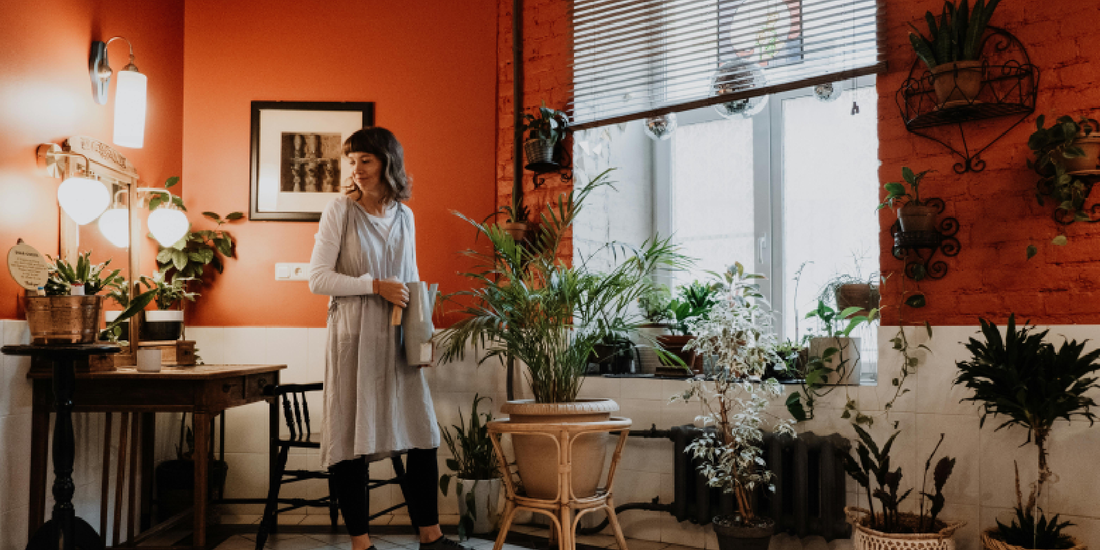
Best Edible Plants for Indoor Growing
Share
For many plant lovers, indoor gardening has evolved beyond ornamental greenery and blossoming flowers. More and more people are turning their homes into small-scale edible gardens where they can grow herbs, greens, and even compact fruiting plants without stepping outside. Whether you live in a city apartment with limited space or simply enjoy the convenience of having fresh food at your fingertips, cultivating edible plants indoors is both rewarding and practical. With the right tools—like the amoyls VerdantGlow S-Shaped 8-Tier Plant Shelf with Grow Lights—your indoor garden can thrive year-round.
This guide explores the best edible plants for indoor growing, why they succeed indoors, and how to maximize your harvest. You’ll also learn practical tips for setup, light management, and maintenance that will make your indoor garden a lasting source of joy and nutrition.
Why Grow Edible Plants Indoors?
Indoor gardening offers a number of advantages that extend beyond aesthetics:
-
Freshness at Home
You can harvest herbs, greens, or vegetables right before cooking, ensuring superior flavor and nutritional value. -
Year-Round Harvests
By controlling light and temperature, you are no longer restricted by outdoor seasons. -
Space Efficiency
Vertical plant shelves like the VerdantGlow 8-Tier Stand maximize small spaces, allowing multiple edible plants to grow in compact apartments. -
Healthier Living Environment
Plants help filter indoor air, improve humidity, and create a calming environment. -
Sustainability
Growing indoors reduces reliance on store-bought produce, lowers packaging waste, and supports eco-friendly living.
Essential Elements for Indoor Edible Gardening
Before choosing which edible plants to grow, it’s important to understand the fundamental requirements:
- Light: Most edible plants require 6–12 hours of light daily. Full-spectrum grow lights, like those integrated into the amoyls VerdantGlow shelf, mimic natural sunlight.
- Containers: Pots with good drainage prevent root rot and ensure healthy growth.
- Soil: Nutrient-rich potting mix, often supplemented with organic compost, provides the foundation for strong plants.
- Watering: Consistent but controlled watering is critical—overwatering is one of the most common mistakes.
- Air Circulation: Good airflow reduces mold, mildew, and pests.
With these basics covered, let’s look at the best edible plants for your indoor garden.
1. Herbs: Flavorful Staples for Every Kitchen
Herbs are the easiest entry point into indoor edible gardening. They grow quickly, require minimal space, and can be harvested regularly.
Basil
- Why It Works Indoors: Basil thrives under warm temperatures and steady light, making it a natural fit for grow shelves.
- Uses: Perfect for pesto, pasta sauces, or fresh garnish.
- Tips: Harvest leaves regularly to encourage bushier growth.
Mint
- Why It Works Indoors: Highly resilient and forgiving of imperfect conditions.
- Uses: Great for teas, cocktails, and fresh desserts.
- Tips: Mint spreads quickly; use a container to keep it contained.
Parsley
- Why It Works Indoors: Slow-growing but hardy, parsley can last months indoors.
- Uses: Adds freshness to salads, soups, and Mediterranean dishes.
- Tips: Choose Italian flat-leaf parsley for stronger flavor.
Thyme & Oregano
- Why They Work Indoors: These Mediterranean herbs tolerate dry conditions and do well under consistent lighting.
- Uses: Ideal for roasted vegetables, meats, and sauces.
- Tips: Allow the soil to dry slightly between watering.
2. Leafy Greens: Nutritious and Fast-Growing
Leafy greens are nutrient powerhouses that grow quickly, making them a top choice for indoor gardens.
Lettuce
- Why It Works Indoors: Compact root systems and short growth cycles.
- Uses: Fresh salads, wraps, and sandwiches.
- Tips: Harvest outer leaves regularly to keep plants productive.
Spinach
- Why It Works Indoors: Cool-season crop that thrives in controlled indoor environments.
- Uses: Smoothies, sautés, and pasta dishes.
- Tips: Provide consistent moisture and cooler conditions if possible.
Kale
- Why It Works Indoors: Extremely resilient and tolerates varied indoor conditions.
- Uses: Salads, chips, soups, and stews.
- Tips: Harvest baby leaves for tender salads or mature leaves for cooking.
Arugula
- Why It Works Indoors: Fast-growing with a peppery flavor.
- Uses: Salad mixes, pizza toppings, and sandwiches.
- Tips: Needs steady watering to prevent bitterness.
3. Microgreens: Maximum Nutrition in Minimal Space
Microgreens are young seedlings harvested at 1–3 weeks old. They pack concentrated nutrients and flavors.
- Why They Work Indoors: Require little space, grow in shallow trays, and are ready to harvest quickly.
- Best Options: Radish, broccoli, sunflower, mustard.
- Uses: Toppings for salads, sandwiches, and bowls.
- Tips: Rotate plantings every week for a continuous supply.
4. Compact Fruiting Plants
While fruiting plants usually need more space and light, some varieties adapt well to indoor growing.
Cherry Tomatoes
- Why They Work Indoors: Compact dwarf varieties thrive under grow lights.
- Uses: Fresh snacking, salads, sauces.
- Tips: Provide pollination assistance by gently shaking the flowers.
Peppers
- Why They Work Indoors: Many hot pepper and small sweet pepper varieties are suitable for containers.
- Uses: Culinary seasoning, salsas, stir-fries.
- Tips: Consistent warmth and light are essential for fruiting.
Strawberries
- Why They Work Indoors: Alpine and everbearing varieties perform well in pots.
- Uses: Desserts, breakfast bowls, smoothies.
- Tips: Ensure good drainage and pollinate blossoms by hand if needed.
5. Root Vegetables (Small Varieties)
Root vegetables can be trickier indoors but are possible with the right setup.
- Radishes: Grow quickly and fit well in shallow containers.
- Carrots (Mini Varieties): Shorter cultivars adapt better to pots.
- Beets: Provide both edible roots and nutritious greens.
Tip: Ensure at least 6 inches of soil depth for roots to develop properly.
6. Specialty Edible Plants
For gardeners who want something unique:
- Lemongrass: Provides citrusy flavor for teas and soups.
- Ginger: Can be grown from store-bought rhizomes in deep containers.
- Edible Flowers (e.g., Nasturtiums, Calendula): Add color and flavor to salads and baked goods.
These options add variety and sophistication to your indoor edible garden.
Setting Up with the amoyls VerdantGlow S-Shaped 8-Tier Plant Shelf
The VerdantGlow stand was designed with indoor edible gardening in mind. Here’s why it’s ideal:
- Integrated Grow Lights: Provide consistent full-spectrum lighting for all eight tiers.
- S-Shaped Design: Maximizes vertical space while allowing airflow and light distribution.
- Eight Tiers: Enables growing multiple plant types at once—herbs on one tier, greens on another, fruiting plants at the top.
- Modern Aesthetic: Blends with living spaces, making your indoor garden both functional and stylish.
- Durability: Built to handle the weight and moisture demands of edible plants.
With this setup, even small apartments can become thriving edible oases.
Practical Tips for Success
- Rotate Plants: Ensure even light exposure by rotating pots weekly.
- Harvest Often: Regular harvesting encourages continuous growth.
- Monitor Pests: Indoor pests like aphids and spider mites may appear; organic sprays or neem oil work well.
- Fertilize Lightly: Use diluted organic fertilizer to supplement nutrients.
- Keep a Journal: Tracking growth helps identify what works best in your space.
Final Thoughts
Indoor edible gardening is more than just a hobby—it’s a lifestyle shift toward healthier, fresher, and more sustainable living. By growing herbs, leafy greens, microgreens, and even compact fruiting plants, you can transform your home into a mini food sanctuary. With the amoyls VerdantGlow S-Shaped 8-Tier Plant Shelf with Grow Lights, success is not just possible, it’s simple and beautiful.
Start with a few herbs or leafy greens, then expand into more adventurous crops as your confidence grows. Every harvest will remind you of the joy of cultivating life indoors—and the unmatched flavor of homegrown food.
